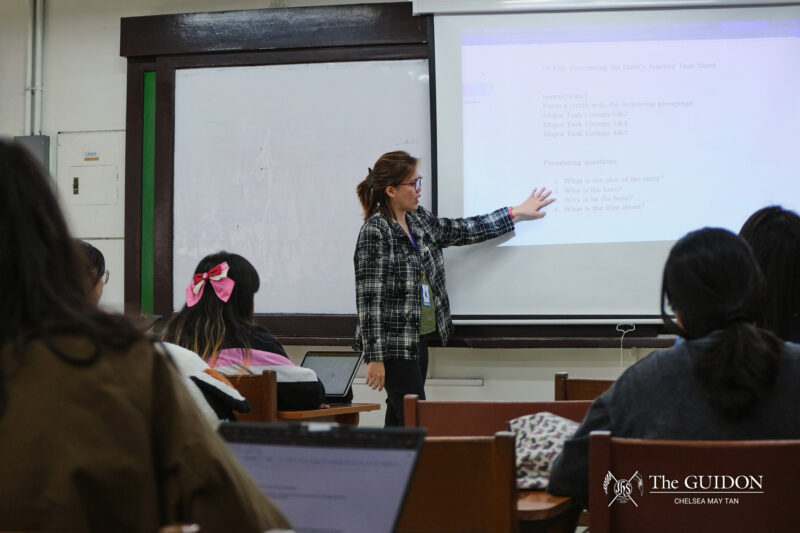They say lightning doesn’t strike the same place twice, but for one real estate Zeus, the Shoemart Development Corporation (SMDC), it seems that Loyola Heights is just an all-too-lucrative market to let go of.
In 2009, SMDC was planning to construct the Stanford Residences, a 31-story condominium with a standalone supermarket, near Petron Katipunan and the Sta. Maria del la Strada Parish.
However, residents from two neighboring villages, La Vista and the Loyola Grand Villas, expressed opposition towards the construction because of environmental concerns and the alleged violation of the Quezon City Comprehensive Zoning Ordinance.
Eventually, the staunch opposition of the community drove SMDC to abandon the project. In less than two years, though, the real estate conglomerate managed to draw the collective ire of the same Loyola Heights community through a decidedly familiar situation: the construction of a high-rise condominium riddled with environmental concerns and allegations of circumventing the law.
Once again, the Loyola Heights community is in a battle against “the good guys”—at least that’s what SMDC brands itself now.
‘Is it a trend?’
This time, it’s the SMDC’s Blue Residences that’s receiving attacks. The project has pushed the Sanggunian and the different homeowners’ association in Loyola Heights to directly confront SMDC and the city government.
In contrast with the Stanford Residences, the Blue Residences is not set to be erected on a residential area. Thus, the Comprehensive Zoning Ordinance permits the construction of up to 27 stories. But even with these less restrictive rules, SMDC still ruffled a lot of feathers by setting the height of their new project at 42 stories. This pushed SMDC to lobby for an exemption from the city council.
Given that it’s not the first time SMDC elicited such a negative response from the community, Sanggunian Secretary-General Ian Agatep thinks that SMDC should take a second look at their values as a company.
“Is it a trend? If yes, then it shows that they are not doing well [with regards to] corporate ethics,” he says.
SMDC actually self-imposes a corporate mission statement, readily available on its website. One of the items in the statement specifically says that SMDC will “[assist and nurture] the communities in which it operates by progressively building on its role as a responsible corporate citizen.” The company also listed “integrity” and “prudence” as two of their core values.
The scenes on the ground, though, put these statements by SMDC into question.
While Loyola Heights Barangay Captain Caesar Marquez gives SMDC credit for some of its programs, such as scholarships for less fortunate students, he thinks that the corporation forgets its relationship to its immediate community.
“Bigla kang pumasok sa isang community, [at] super laki mo [nang kompanya]—parang sa iyo na lahat (You suddenly enter a community as a gigantic corporation—then you act as if you have a right to everything),” he says. “They should improve their relationship [with the community].”
Barangay, ‘bypassed’
It seems that on the very first instance, though, SMDC already failed to give the most immediate community that the Blue Residences would have an impact on—the barangay—its due.
The stakeholders have been criticizing SMDC for starting the construction without all the necessary documents. While the barangay issued a locational clearance, Marquez said that the barangay did not release a construction permit because no public consultation over the SMDC project was conducted.
Because of this, Marquez claimed that the developer “bypassed the barangay level,” especially since SMDC had not even returned to the barangay hall to complete the necessary paperwork.
However, Quezon City Chief of Staff Aldrin Cuña believes that SMDC actually went to the barangay level and applied for the necessary permits but did not receive a favorable response.
“Most probably, the barangay government had some reservations about the project,” Cuña says. “If… [SMDC] applied in the barangay level and the barangay did not act on their application, the remedy is that [SMDC] could probably bypass [the barangay] and proceed to the city hall.”
Attempts to communicate
In response to the allegation of not holding public consultations, though, SMDC claimed that they are not aware of any law requiring such. In addition, SMDC Lawyer Mena Ojeda said before that the company conducted a social perception survey before the project, administered to people within a hundred meters from the construction site.
Furthermore, following the meeting with Quezon City Vice Mayor Joy Belmonte last March 25, SMDC also convened with the stakeholders to discuss the Blue Residences. However, Marquez says that the consultation “was not satisfactory because it was rushed.” SMDC was also criticized for not sending any decision-makers to the meeting.
Because of all these complaints, University Vice President for Planning and Administration Edna Franco says that the Loyola Heights community has decided not to talk to SMDC anymore, deciding to negotiate with city officials instead.
Winning exemptions
SMDC’s plans for the Blue Residences clearly violate two provisions of the Comprehensive Zoning Ordinance, specifically Sections 4 (Traffic Generation) and 11-F (Height Regulation) of Article VI.
This is what pushed SMDC to lobby for an exemption in the first place. The corporation went to the city council seeking for a resolution that would authorize SMDC to go on with the project despite the zoning violations. While SMDC secured the necessary resolution from the 17th City Council under the previous city administration, the process by which it was granted is proving to be problematic.
Franco says that the resolution granting the exemption to SMDC was approved the same day it was introduced. “Clearly, there [were] neither investigations nor hearings,” she says. “Something like this goes through [multiple] sessions.”
In the said March 25 meeting, Franco and other representatives from the community inquired about the documents presented during the session where the exemption was granted. However, not a single study from the City Planning Office was presented.
“Normally, if the city council had deliberated on [this] properly, the documents should have been in a file.”
It is also interesting to note that similar exemptions were granted to two other SMDC projects that same day: My Place in Barangay South Triangle and the Grass Residences near SM City North EDSA.
In addition, the minutes of the said city council session revealed that the Acting Presiding Officer, then Councilor and now Congressman Jorge Banal, immediately closed the floor for discussion as all 19 councilors present raised not a single objection about the exemptions. All 19 were also listed to have introduced the three resolutions, and nine of these councilors still serve as incumbents.
The swiftness by which these exemptions were granted is a cause of frustration for to the Loyola Heights community. Indeed, the hastily approved exemptions put the very purpose of the Comprehensive Zoning Ordinance in question. After all, this law is supposed to provide a measure of protection for communities put at risk by unfettered real estate development.
‘Hindi gumagalaw’
At the moment, the efforts of the stakeholders seem to have paid off somehow. The Quezon City government issued a cease-and-desist order on the project last March 17. While there are reports claiming that construction has resumed, Franco says that three councilors—Councilors Precious Castelo, Alfred Vargas and Allan Reyes—informed the Loyola Heights community of their plans to push for the revocation of the exemption granted to the Blue Residences through a resolution.
Last June 6, different student groups from the Loyola Schools trooped to the city hall to convince more councilors to support the said resolution. This prompted reassurances of support from some councilors, but some other councilors already seem set on supporting SMDC on the issue.
However, Franco said that the resolution revoking the exemption is going nowhere at the moment. “Natutulog, hindi gumagalaw ([It is] dormant, not progressing),” she says.
What ‘good’ means
While Cuña believes that the project can potentially generate economic benefits for Barangay Loyola Heights, he still expects SMDC to rectify its mistakes to the Loyola Heights community.
“They will probably come in and do something to rectify or make amends on some errors they might have committed,” he says.
Agatep is not as optimistic about such rectifications, though. In fact, this is why the stakeholders, including the Sanggunian, have decided to negotiate with the city government instead of SMDC’s representatives.
Nevertheless, Agatep echoes Cuña’s sentiments by expressing hope for an SMDC turnaround.
“What we are looking for is [for them] to prove that they are ‘the good guys’—that’s what their advertisements are telling us.”
Editor’s Note: The GUIDON tried to reach SMDC for its side on the matter. However, the company failed to give any response.







